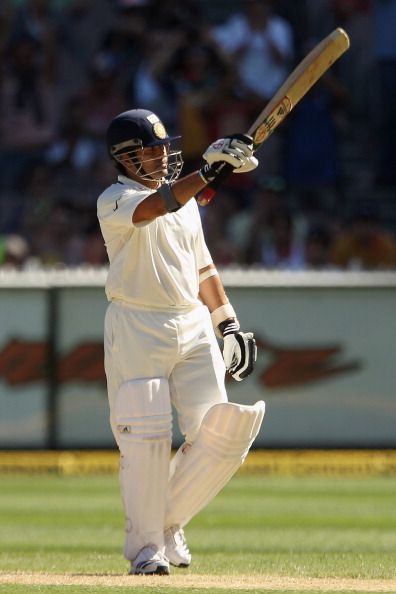
How to compile and script a Test century - An analysis
Has anyone ever wondered why scoring a century is a special thing for any batsman? The moment a batsman steps into the nineties, you can see him getting agitated. He becomes all the more circumspect and from there on starts to accumulate his runs in ones and twos. He does not look at the boundary boards often, unless, of course, the ball is asking to be punished. Once the scoreboard displays a three figure mark against his name, you see entirely a different personality over there. He no more lurks in confinement. All those apprehensions of the nervous nineties disappear like water bubbles. He jumps, punches the air and rejoices. On the whole, he gets totally animated.
No one is an exception when it comes to looking elated after achieving this landmark. Even those who are normally known to be stoic never fail to show certain amount of emotion when they finally get there. Of all centuries, a test hundred has more values than anything else for a batsman. It was for experiencing that very moment, any one gets trained to become a cricketer from his childhood.
Why should a batsman consider it as a real accomplishment? To answer this question, we should take into account two important facets of the game – batting and bowling. For a bowler, just taking a wicket in a match brings him his identity. It gives him a satisfaction that he has contributed something for his team and country. For a batsman, though, that identity, followed by satisfaction, comes only when he gets to a half century atleast. However, a batsman is recognized as a great player only when he begins to pile up centuries. Precisely, that is the reason for any batsman to get jubilant, no matter how composed he normally is, when he crosses three figures.
In the game of cricket, the history of which dates back to more than 100 years, there have been many centurions who had brought about some wonderfully crafted centuries through their willows. Through this article we will be examining the manner in which five of the top century makers in test cricket have always gone on to score their centuries. Taking into account the strengths and the weaknesses of the team for which they have played for, the points will be awarded to each one of them, assessing the way they have compiled and scripted their hundreds. The five cricketers on whom my study is based are Sachin Tendulkar, Jacques Kallis, Ricky Ponting, Rahul Dravid and Brian Lara. Firstly in a random order, we will have their style analysed before having them rated one above the other.
Sachin Tendulkar:
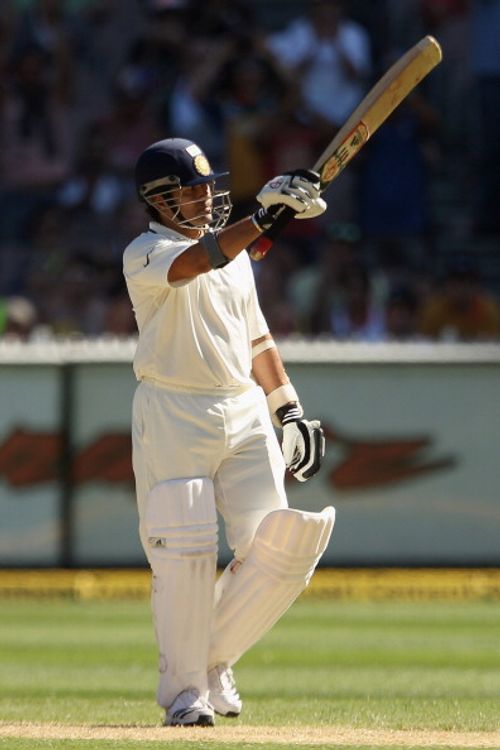
Any cricketing discussion would be incomplete without Mumbai’s batting Maestro and this article, since it is primarily based on centuries, it is almost impossible to ignore him, isn’t it? The whole nation erupts when Sachin scores his century. Though he has almost made it a habit, still we want to see him repeating this feat all the time. Now, we will quickly move ahead and see how he used to compile his hundreds normally and how useful had they been for his team.
Sachin bats at No.4 in tests and has almost owned the position for very long. Since he has a very solid technique, he is good in switching over from defense to offense and vice versa. He seldom begins his innings shakily. He starts middling the ball at the onset without seeing off the first few deliveries. He normally gets to his twenties and thirties quite early with almost run a ball effort. It is then he becomes watchful and slows up his innings in the attempt of building partnerships. From thereon, he waits for the bad balls to score off and till then he keeps himself satisfied with singles and twos for a while. He even leaves the ball and does not bother to face a maiden over if the bowler is bowling decently. This continues till he reaches his sixties or perhaps may be seventies. Then he switches gears and plays his natural game till he reaches nineties and after a minor blip he gets to his centuries. This is how his innings has been forever.
Sachin plays for a team which had the services of Dravid and Laxman, most of the time who had been no different in slowing down things like how Sachin does in the middle of his innings. In fact, they do it for most of the time. The golden rule of pacing the innings is – One has to be anchoring the innings and the others have to bat with ease. When India has the luxury of such batsmen who can anchor the innings, it is expected of a fluent batsman like Sachin to play free. If only he had done it, not only the runs would have got added on to the board but also it would have kept the opposition team on its toes. But then Sachin is not the slowest of the batsmen and he slows down only for a brief period. Also, his strike rate of over 45 in test cricket is not a poor one and the only argument here is – he could have helped it grown better, supporting his team’s winning cause more.
Jacques Kallis:

Kallis is probably one of the toughest batsmen in the world to bowl at. Getting his wicket is perhaps the most difficult task for a bowler, if he gets into his groove. If someone has to get his wicket, he should try doing it at the start of his innings or else he is not the one whose wicket can be dislodged easily. Known for his consistency, he is also known for his selfishness. Yes, the way he paces his innings, without any urgency, made people call him so.
The one thing which is expected of him is to show a bit of aggression, which he lacks very much. In between the innings, he tries to play some of the shots like cover drives and on drives when the balls pitch on the slot, asking to be hit. He never attempts anything extra special even against slower bowlers. Throughout his innings, he would have come down the wicket four or five times and not more than that.
He gets many centuries for his team, no doubt. He comes second in terms of most number of centuries hit in test cricket and only Sachin Tendulkar is above him. But most of his centuries have not helped his team’s winning cause because of the way his innings get decelerated. The team he represents is not blessed with established stroke makers. In fact, bowlers form the backbone for his team. So, it is imperative for him to take the lead, being their best batsman, so that runs get accumulated as well, enough for at least his bowlers to defend. Also, since his innings consume lots of time, the bowlers do not get time to take 20 wickets, which is essential for winning test matches. The argument here is Kallis, citing his team’s lacuna with the bat, could have been a bit assertive in runs scoring.
Ricky Ponting:
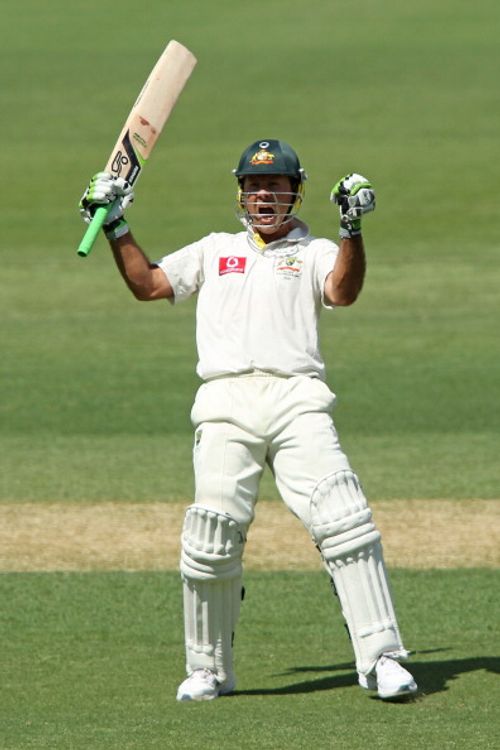
I have never seen this man wasting balls. Of all the five batsmen taken into study, his strike rate is the best in test cricket. Whenever he enters the crease, he struggles finding his timing on the off side. But he does not allow that inability to harm his innings. Rather he gets the balls, which were bowled to his offside, maneuvered skillfully to his onside, thereby keep rotating the strike. After half an hour of this predominant onside play, he starts timing his ball better on the off side as well.
The score board keeps ticking once he gets his all round game back. It is hard to see him playing maiden overs in between. Besides, once he settles, he has the ability to construct his innings with a risk free game. The only disadvantage is – he is an instinctive puller and maybe he can get caught at deep mid wicket, any time. But, that is one shot he has perfected so much and so 9 out of 10 times he clears the boundaries.
The Australian team, during his hey days, has always been blessed with attacking batting line up which can bat till the wire. So, that allows him to play freely without the intention of preserving his wicket. Since the Australians have scored quickly in test matches, that allows his bowlers the required time to bowl out their opposition batsmen in two innings comfortably. That is why you can always find the men from the land of Kangaroos finishing off the test matches inside four days, very often.
Rahul Dravid:
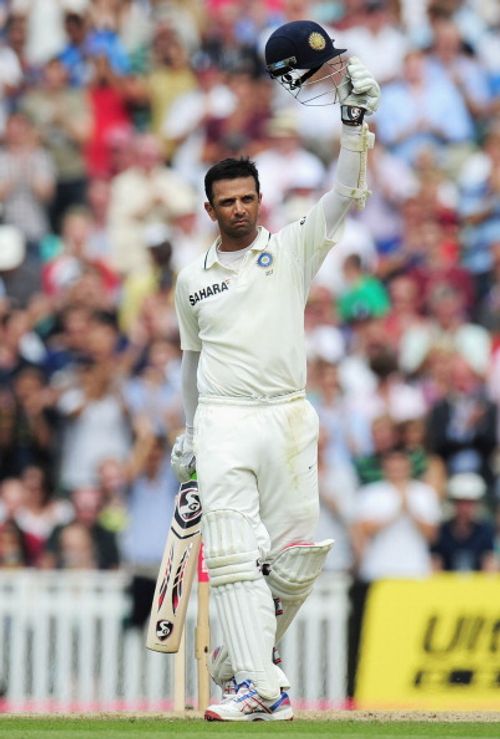
He is no different from Kallis in consuming the balls in test matches. In fact, he has faced the maximum number of balls in test cricket, more than anyone else. Normally, he used to start very slow and even used to miss scoring opportunities initially. But that is the way Dravid plays and if you can analyse all his hundreds, the first fifty of his innings, would have taken a longer time than the second one. He always took time to settle down and most of his runs in his first fifty would have come in boundaries. On an average, he used to hit 7 boundaries for his first fifty, which says he hardly rotated the strike.
But, more often than not, his country has been able to save many test matches because of the way he had batted. In fact, he has aided his team to many victories because of his batting. Unlike, Jacques Kallis, since he belonged to the team which had the luxury of great stroke makers, he was able to construct the innings in his own laborious pace; his sheet anchor role helped the others in the line up to bat freely. So, his way of pacing the innings helped his team’s cause, more often than not. Perhaps if he has played for any other team which did not have the finest batting skills, then he would have been asked to increase the scoring rate. But then that was not the case since he was playing for India.
Thereafter, once he got to his rhythm, he had accelerated his scoring at a very decent rate, which was why he used to get to his second fifty at a quicker time than the first one. In between, he might go into the shell for which was accused so often but then he always made up for it by piling runs at the later stage of the innings.
Brian Lara:
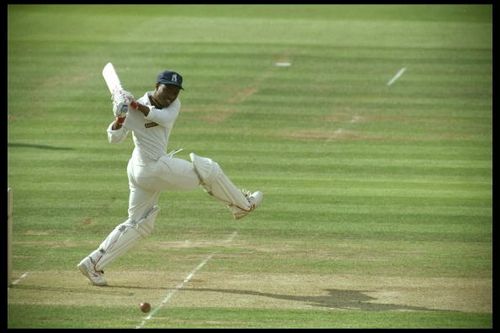
He was one of the most elegant and flamboyant of all the batsmen who have played. The Prince of Trinidad, as he is called, comes next only to Sir Donald Bradman in scoring more double centuries and he jointly holds a record with three other men in scoring two triple centuries in his career.
The way he used to quicken the pace of his innings right from the word go helped him to play long innings throughout his career. But the thing was – the others in the team were not renowned for batting in test matches and so the innings of West indies normally ended very fast which left his oppositions who had strong batting line ups to get much more time in chasing down and taking the first innings lead. Lara was never a defensive player and he scored 40% of his team’s runs most of the time, on an average.
If only he had learnt to consume the balls and slowed down the innings, he would have left lesser time for his opposition to play their innings, be it first or second. During the period in which he played, his team was not blessed with good bowlers, they have found it difficult to bowl out their opposition and so in spite of his commanding presence, his team has suffered white wash many a time.
Rankings:
Now it is time for me to announce the rankings, having looked into the pros and cons of each and every one of them.
1. Ricky Ponting (Batting at a faster pace for a team which is strong in both batting and bowling.)
2. Sachin Tendulkar (Though slows down a bit in between, it does not affect his team so much. Gets centuries at a very good pace.)
3. Rahul Dravid (Gets third place because someone requires to play such an anchoring role and he has done it perfectly for his team.)
4. Brian Lara (Could have slowed down for his team’s cause to steal time.)
5. Jacques Kallis (Playing at Snail’s pace for a team which is not blessed with best batting line up, does not augur well for his case)